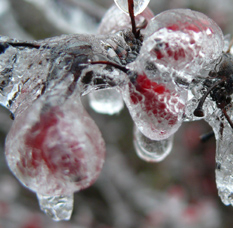Winter 2012
Table of Contents - Vol. VIII, No. 4
Poetry Translations Fiction Non-fiction Reviews
Jonathan Harrington
The three poets who appear here—Briceida Cuevas Cob, Feliciano
Sánchez Chan, and Isaac Esau Carrillo Can—all write in the
contemporary Yucatec Mayan language. Their work illustrates
some of the diversity to be found in poetry written in Mayan.
The Mayan language is by no means dead. Some sources report
that it is still spoken by an estimated six to seven million people in
southern Mexico, Guatemala, Belize, and parts of Honduras and El
Salvador. Though written in the modern version of an ancient
language, these poems are as contemporary as any poetry written in any
language in the world. The Maya in these poems are not part
of a civilization that has “mysteriously
disappeared.” They are the living, breathing
inhabitants of the Yucatán Peninsula of Mexico today with all their
hopes and heartbreaks, aspirations and disappointments. All
three write originally in the Mayan language and make their own
translations into Spanish. All three poets have published
bilingual books of their poems in Mayan and in Spanish.
These three poets write in very different styles and with distinct
concerns. In the work of Briceida Cuevas Cob you will not
find ruined ancient cities, myths, gods, human sacrifices, shamans, end
of the world prophesies—the stuff of the Yucatan Tourist Board and New
Age seekers. Her subject matter is
people, and her poetry represents
the living Maya as they truly are: loquacious, joking, down-to-earth,
sensual, devout, in awe of nature, and gentle. The poems
frequently employ word play, double meaning, and sexual innuendo. The
images come directly from Briceida´s world of the Maya village, but the
emotions expressed are universal.
Feliciano Sánchez Chan, on the other hand, tends to write about the
natural world. Animals, plants, trees, water, stone, the
stars, the moon, and the sun all come alive in his metaphorical (and
often fable like) renderings of the natural environment of Yucatan. The
translations that follow are from Feliciano´s book Ukp’eel wayak/Siete
Sueños.
The poetry of Isaac Esau Carrillo Can could almost be seen as a perfect
fusion of the two styles mentioned above: the naturalistic style
(Sánchez Chan) and the humanistic (Cuevas Cob). Carrillo
Can’s work also contains images from nature.
Briceida Cuevas
Cob, translated
by Jonathan Harrington
Your
Mother/Tu madre/A na’
Night of the
Eclipse/Noche de
eclipse/U áak’abil tu chibil uj
Feliciano
Sánchez Chan,
translated by Jonathan Harrington
Maria/María
/X-Maruch
My Village/Mi pueblo/In kaajal
Isaac Esau Carrillo Can,
translated by Jonathan Harrington
To Scare Away Fear/Ahuyentar
el
miedo/I’ixtaj saajkil
I Am the One Who Loves
You/Soy
quien te ama/Teen máax yaabilmech
© Jonathan Harrington
